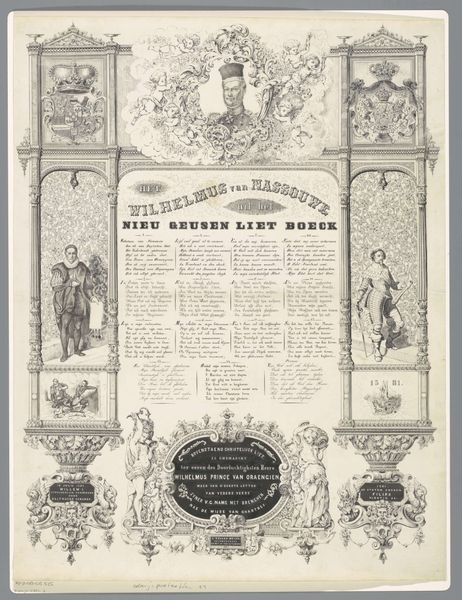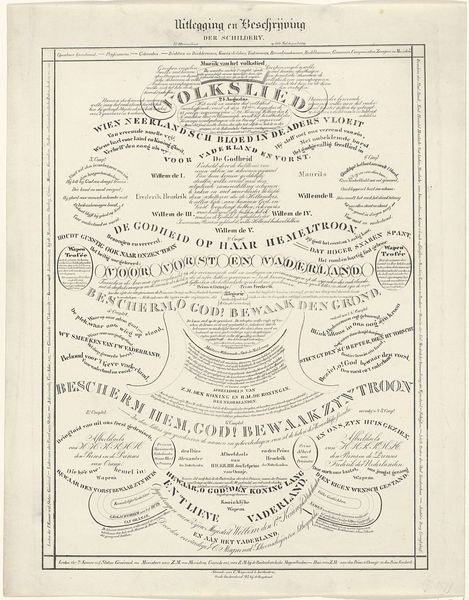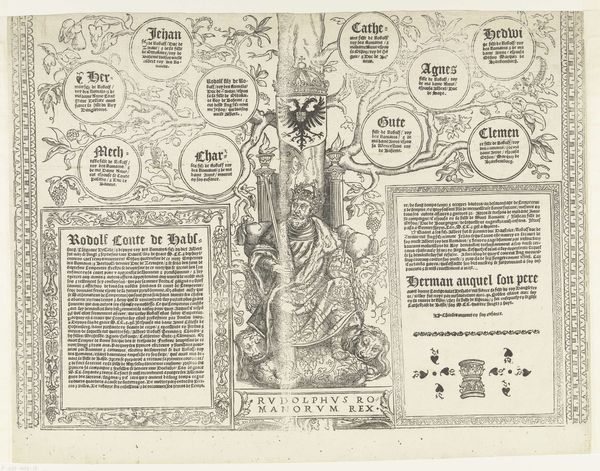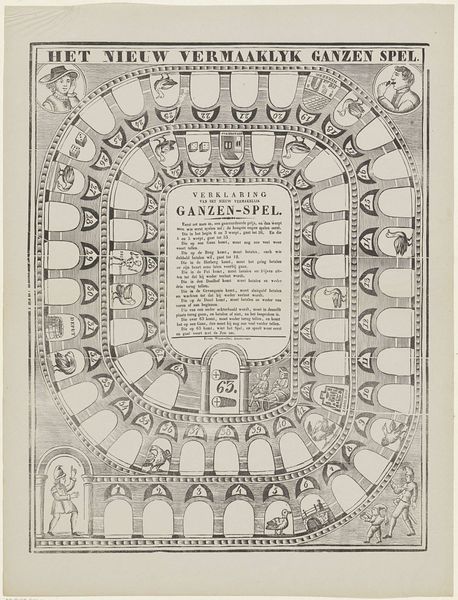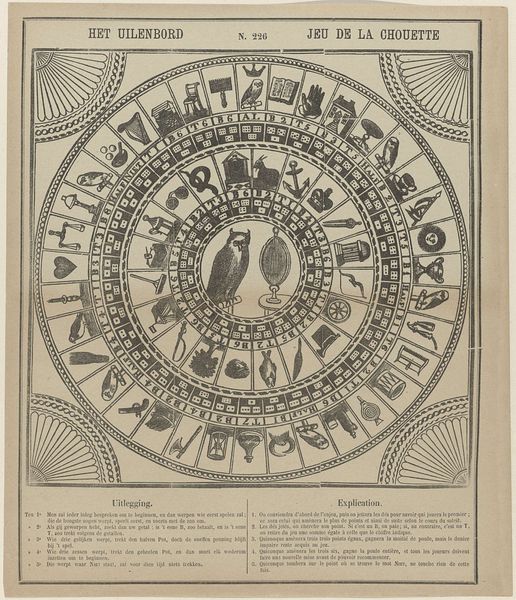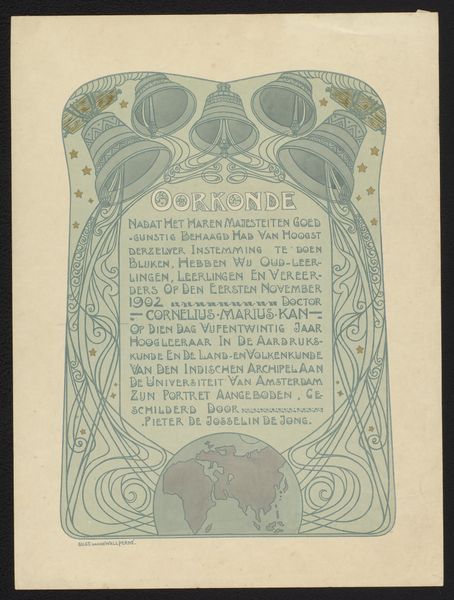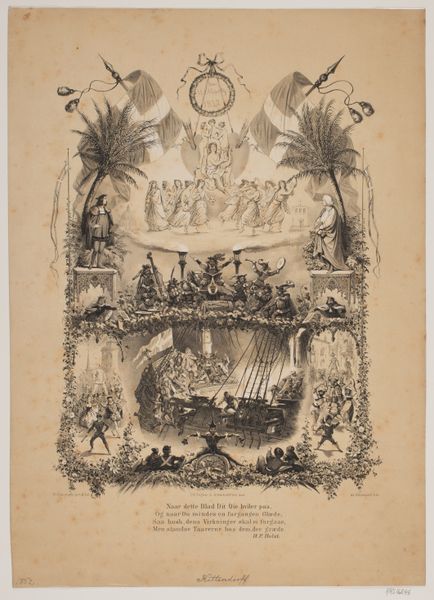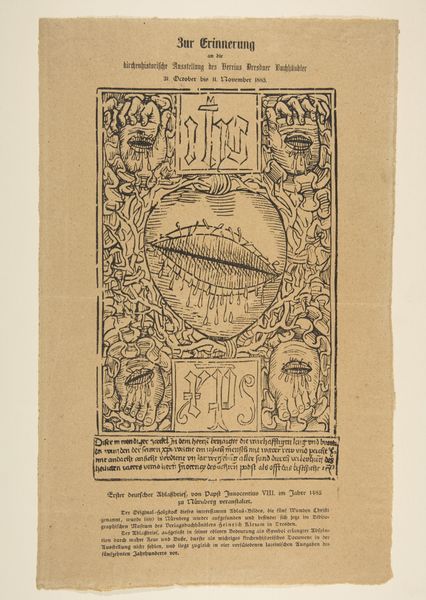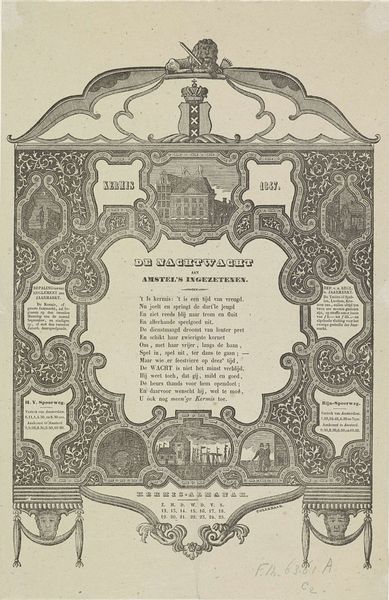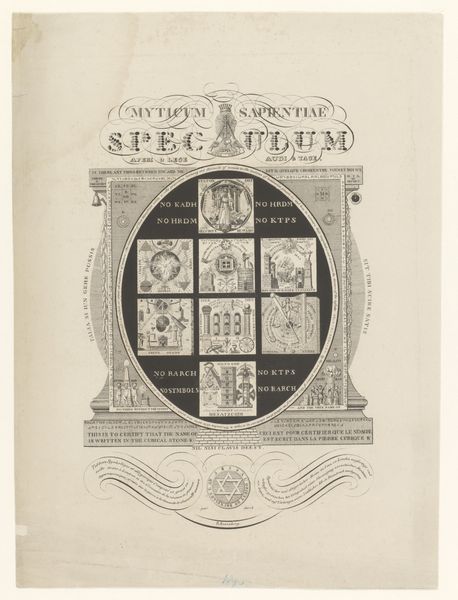
graphic-art, print, poster, engraving
#
graphic-art
# print
#
old engraving style
#
hand drawn type
#
poster
#
engraving
#
columned text
Dimensions: height 730 mm, width 579 mm
Copyright: Rijks Museum: Open Domain
Curator: Welcome. Before us hangs "Tien geboden in verschillende handschriften met voorstellingen," translating to "Ten Commandments in various scripts with depictions." This print, engraving, or poster—we see evidence of multiple media—is attributed to G.L. Lambrecht, likely dating between 1850 and 1899. Editor: Right, a stern graphic slap! At first glance, I'm hit by this visual busyness; a dense tapestry of text and tiny pictures battling for my attention. The grey palette adds to the severity, don’t you think? Curator: Indeed. Observe how the columned text adheres to structural principles common in didactic art of the period. Notice also the hand-drawn typography—distinctly ornate and yet carefully arranged to convey the Ten Commandments. Each phrase possesses unique lettering. Editor: That's true; each command is framed like a little illuminated manuscript—but then crammed together! It feels overwhelming, like trying to absorb centuries of law at once. I do enjoy how literal the illustrations are, though—mini-dramas enacting each moral guideline. Curator: Semiotically rich, each illustration offers a symbolic shortcut to understanding the abstract concept it represents. Take, for example, the miniature portrayal of a family gathered around a table—a depiction accompanying the commandment concerning honoring one's parents. It promotes not only devotion, but also stability in the domestic sphere. Editor: Okay, that I get—it works like a moral comic strip! But I wonder, beyond religious instruction, if this piece inadvertently reflects the Victorian era's anxieties—a frantic effort to contain societal chaos within rigid rules. Does that ring true? Curator: Possibly. While the aesthetic echoes certain movements in late Renaissance art, the mass production suggests a very different societal role—disseminating religious instruction on a scale not previously possible, even beyond the church. Editor: Makes sense. So, it's less about high art and more like spiritual infographic—an early attempt at moral messaging through mass media! It gives a new perspective on both religious and artistic expression of the time. Curator: Precisely. A confluence of piety and production. Editor: A divine dispatch, if you will. Let's move on!
Comments
No comments
Be the first to comment and join the conversation on the ultimate creative platform.
